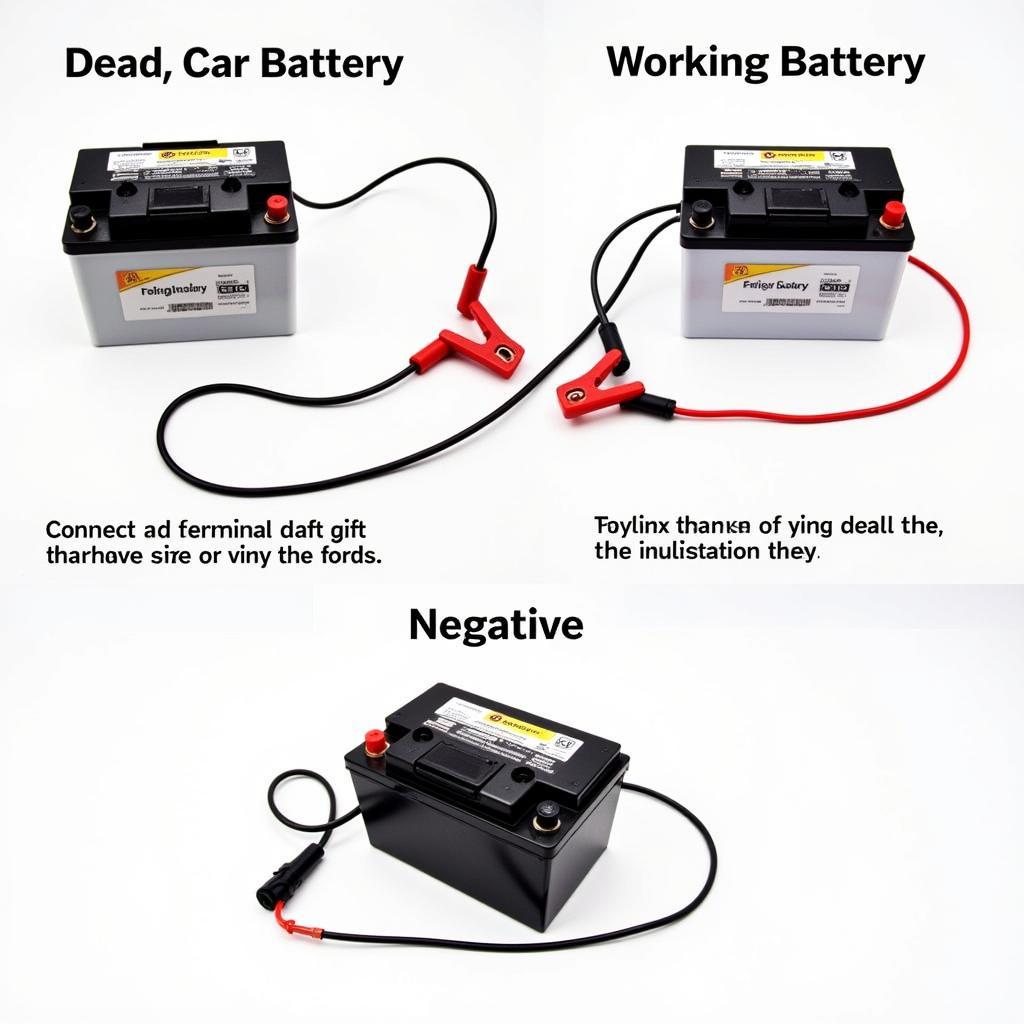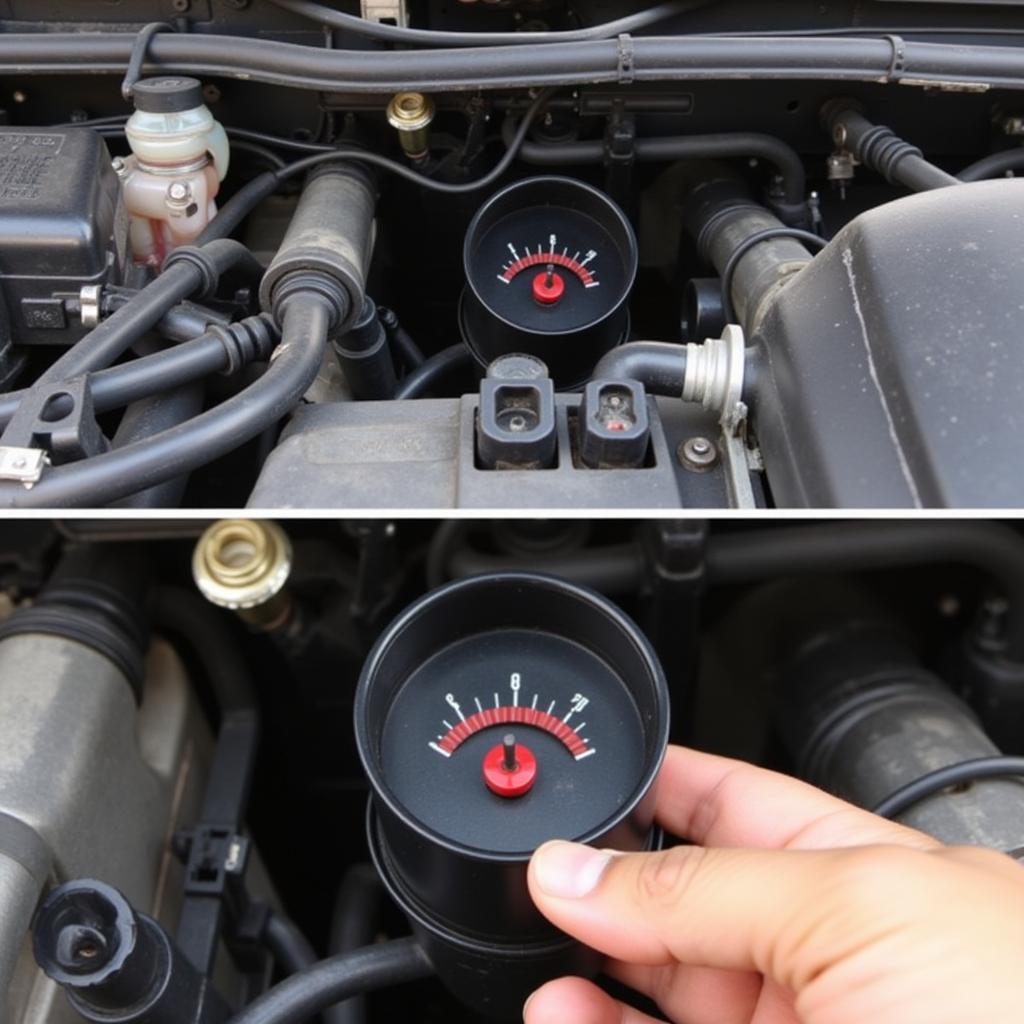A dead car battery can be a frustrating experience, but knowing how to jump-start your car or troubleshoot the issue can save you time and money. This guide provides you with all the information you need to tackle a dead car battery, from simple jump-starts to more complex diagnostics and remote software solutions.
Jump-Starting Your Car: A Step-by-Step Guide
Jump-starting is often the quickest solution for a dead battery. Follow these steps carefully to do it safely and effectively:
- Gather your supplies: You’ll need jumper cables and another vehicle with a working battery or a portable jump starter.
- Position the vehicles: Park the working vehicle close to yours, ensuring the batteries are accessible. Turn off both engines.
- Connect the positive (+) cables: Attach one red clamp to the positive (+) terminal of your dead battery. Then, connect the other red clamp to the positive (+) terminal of the working battery.
- Connect the negative (-) cables: Attach one black clamp to a clean, unpainted metal surface on your car’s engine block, away from the battery. Connect the other black clamp to the negative (-) terminal of the working battery.
- Start the working vehicle: Let it run for a few minutes to charge your dead battery.
- Start your car: If it starts, let both vehicles run for a few more minutes.
- Disconnect the cables: Remove the cables in the reverse order of connection.
 Jump Starting a Car Battery Safely
Jump Starting a Car Battery Safely
Beyond Jump-Starts: Diagnosing the Root Cause
While a jump-start gets you back on the road, it’s crucial to identify why your battery died in the first place. Several factors can contribute to a dead battery:
Common Causes of a Dead Car Battery
- Old age: Car batteries have a limited lifespan, typically 3-5 years.
- Extreme temperatures: Both hot and cold weather can affect battery performance.
- Parasitic drain: Electrical components drawing power even when the car is off.
- Alternator issues: A faulty alternator won’t recharge the battery properly.
- Corroded terminals: Corrosion can prevent proper electrical connection.
“A dead battery is often a symptom, not the problem itself,” says John Miller, Lead Automotive Electrical Engineer at AutoTech Solutions. “Diagnosing the root cause is crucial for preventing future occurrences.”
Remote Diagnostics and Software Solutions: The Future of Car Repair
Modern technology allows for remote diagnosis and software-based solutions for various car problems, including battery issues. These advancements can save you a trip to the mechanic and offer convenient troubleshooting options.
How Remote Diagnostics Works
Remote diagnostics involve connecting your car’s onboard computer to a diagnostic tool via a wireless connection. This allows technicians to access real-time data about your car’s systems, including the battery, alternator, and starter.
Benefits of Remote Diagnostics
- Convenience: Get your car diagnosed from anywhere.
- Speed: Faster diagnosis and repair.
- Cost-effective: Potentially lower repair costs.
“Remote diagnostics and software updates are revolutionizing the automotive repair industry,” says Sarah Lee, Senior Automotive Software Engineer at Connected Car Solutions. “They offer a faster, more convenient, and often more affordable way to address car problems.”
Start a Car Battery Dead: Key Takeaways
Dealing with a dead car battery can be inconvenient. However, understanding the jump-starting process, diagnosing the underlying cause, and utilizing modern remote diagnostic tools can empower you to address the issue effectively. Regular battery maintenance, such as cleaning terminals and checking the charging system, can help prevent future problems. Remember, a dead battery is often a sign of a larger issue, so getting to the root of the problem is essential for long-term car health.
FAQ
- How often should I replace my car battery? Typically every 3-5 years, depending on usage and climate.
- Can I jump-start my car with a portable jump starter? Yes, portable jump starters are a convenient alternative to using another vehicle.
- What are signs of a failing alternator? Dim headlights, flickering dashboard lights, and strange noises from the engine.
- How can I prevent my car battery from dying? Regular maintenance, such as cleaning terminals and checking the charging system, can help.
- What should I do if my car won’t start after a jump-start? There may be a more serious issue, and you should consult a mechanic.
- Is it safe to leave my car lights on overnight? No, leaving your lights on can drain your battery, especially older batteries.
- How much does a new car battery cost? Prices vary depending on the type and size of the battery but typically range from $50 to $200.


